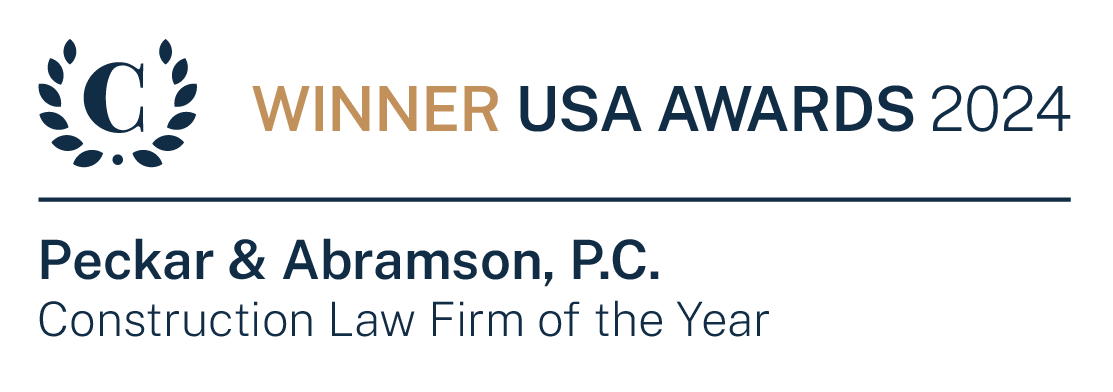Govconlaw Blog
Where to Protest: Some Pros and Cons of Each Forum
By: Peck Law
Published Date: July 23, 2018
Protests are not uncommon in government contracts. Contractors often disagree with the contracting agency’s evaluation of their proposals and sometimes want to challenge the agency’s source selection decision. Part of the strategy in pursuing a protest is deciding the forum in which to file the protest. Contractors have three options: the contracting agency, the Government Accountability Office (“GAO”) and the Court of Federal Claims (“COFC”). In this article, we’ll briefly discuss some of the pros and cons of each forum.
1. The Contracting Agency
The first forum the contractor may select is the agency that conducted the procurement. For agency-level protests, contractors may file a protest directly with the contracting officer who conducted the procurement. Alternatively, if permitted by the agency’s regulations, the contractor may file a protest at a level above the contracting officer. Agencies are required to have a designated agency official to decide protests. Depending upon the agency’s regulations, this official may review the protest independently or may review the contracting officer’s decision on the protest on an appeal like basis.
There are a number of pros to filing an agency-level protest:
• Agency-level protests usually are the least expensive type of protest. The contractor merely submits a written letter to the agency explaining the factual and legal reasons why the contractor believes the agency’s actions or source selection decision was improper or erroneous.
• Agency-level protests usually take the least amount of time. Agencies have to use their best efforts to make a decision on the protest within 35 days.
• The contractor is entitled to an automatic stay of the procurement if it meets the statutory filing requirements.
• There is a perception by many contractors that agency-level protests are least likely to upset the agency and harm the business relationship between the agency and the contractor.
There also are some important cons to agency-level protests:
• The contractor is asking the contracting agency to change its previous decision. There is a perception that the agency will be reluctant to do so.
• There is no opportunity for the contractor (or its counsel) to review and comment on the procurement record.
2. GAO
The most popular forum for filing a protest is GAO. There are a number of pros to filing a protest with GAO, including:
• Although GAO protests are more expensive than agency protests, they generally are less expensive than COFC protests.
• Protests before GAO are handled by GAO attorneys who are specialists in procurement law.
• The contractor is entitled to an automatic stay of the procurement if it meets the statutory filing requirements.
• The contractor’s counsel has access to the agency report, which generally contains information on the agency’s evaluation of the proposals and source selection decision.
• A review of the agency report can result in supplemental protests if new information is learned that raises additional issues about whether the agency’s actions and source selection decision were proper.
• GAO protests are relatively quick. GAO will issue its decision within 100 days from receipt of the protest
As with any forum, however, there are some cons:
• The contractor does not have the opportunity to engage in any real discovery. Discovery is generally limited to document requests. The contractor can ask for copies of relevant documents in its protest. However, there are no depositions, interrogatories, or requests for admissions.
• GAO protests typically are decided on the papers. Although GAO may hold a hearing, it is relatively rare for it to do so.
• GAO’s decision is not binding on the agency. GAO makes recommendations to the agency. However, it is very rare for an agency not to follow GAO’s recommendation.
3. COFC
Lastly, the contractor may choose to pursue its protest before the COFC. Protests before the COFC are the most similar to traditional litigation. The contractor files a Complaint along with motions for an injunction and temporary restraining order. The Government files an Answer. After the Government produces the Administrative Record, the parties file Motions for Judgment on the Record.
Some of the pros of filing a protest with the COFC are:
• For post-award protests, there is no specific time period in which the protest has to be filed. Contractors who miss the protest deadline with the agency or GAO still may be able to protest at the COFC.
• There is more opportunity for discovery, which can include depositions of government officials.
• The COFC is more likely to have a hearing on the merits.
• The COFC’s decision is binding on the agency.
However, there are some significant cons, including:
• Protests are handled by judges who have procurement experience but may not be specialists in procurement law.
• COFC protests tend to be more expensive because of the need to file more formal pleadings and to have hearings.
• There is no automatic stay. If the agency will not agree to a voluntary stay, the protester must prove that it is entitled to a temporary restraining order and/or preliminary injunction.
• The agency is represented by the Department of Justice; not agency counsel.
• There is no specific time for the COFC to issue a decision on the protest; although protests generally are handled expeditiously.
4. Sequential Protests
Contractors should keep in mind that – at least for now – sequential protests are possible. If the contractor loses its agency-level protest, it still may be able to file a protest with GAO or the COFC. Similarly, if the contractor loses its GAO protest, it still may be able to file a protest with the COFC. These are new protests – not appeals. Contractors, however, need to be diligent to ensure they follow any timing rules.
#GovConLaw










